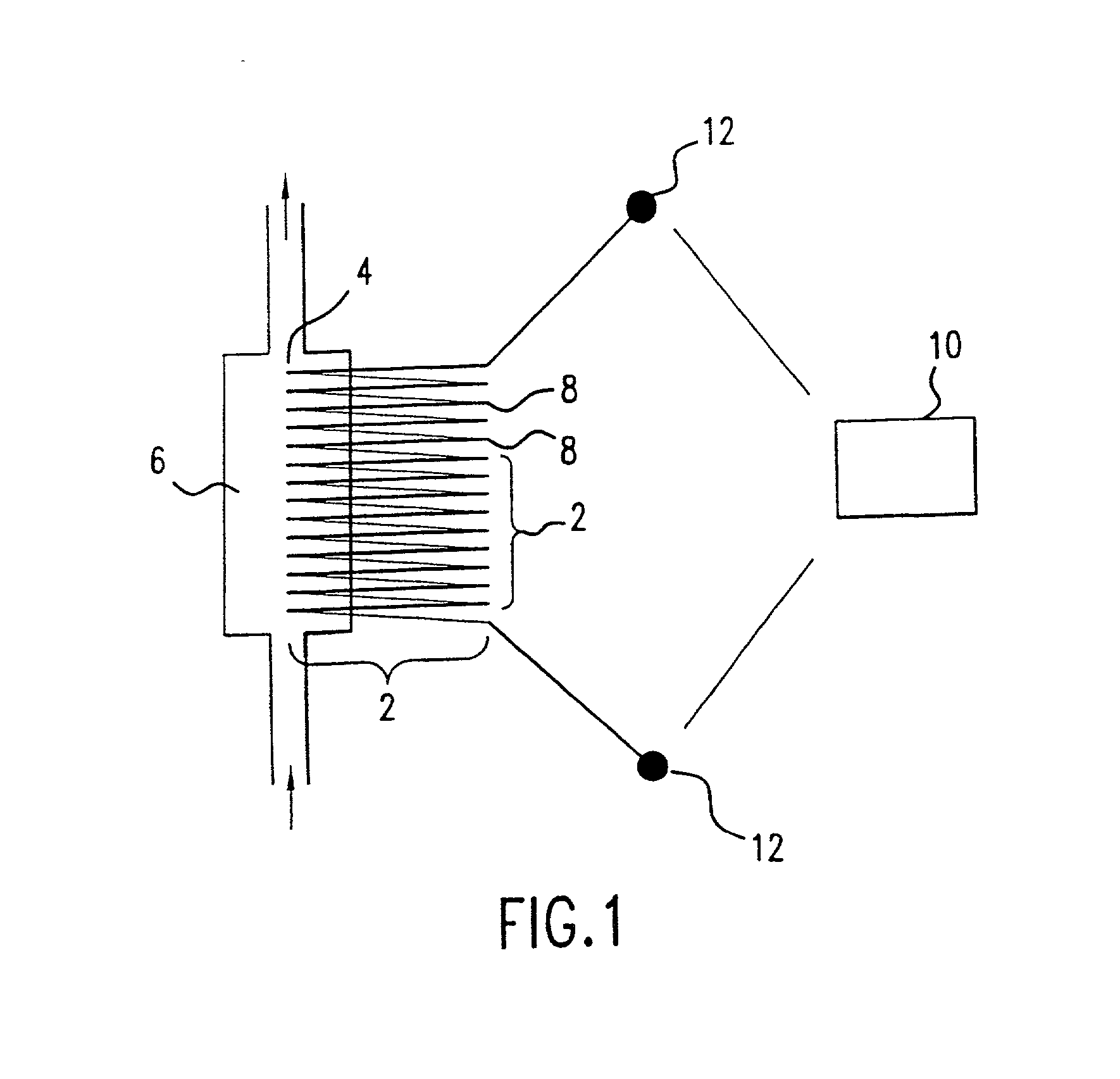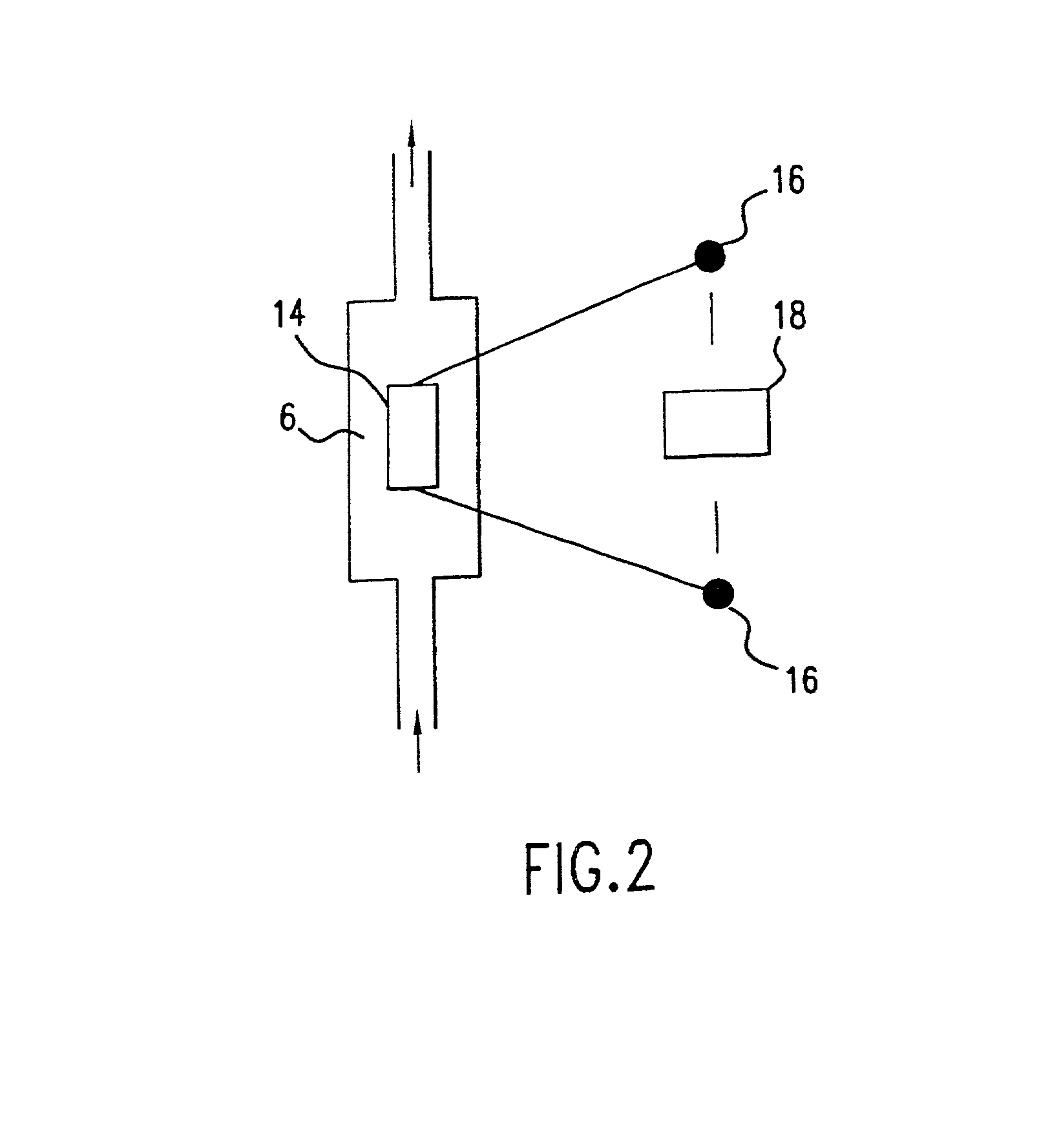Method of determining the nucleotide sequence of oligonucleotides and DNA molecules
a technology of oligonucleotides and nucleotide sequences, applied in the field of determining the nucleotide sequence of oligonucleotides and dna molecules, can solve the problems of inability to detect and identify single nucleotide molecules, the method of sequencing based on gel electrophoresis readout becomes far too slow and expensive, and the researchers using this technology are confronted with the enormous problem of detecting and identifying singl
- Summary
- Abstract
- Description
- Claims
- Application Information
AI Technical Summary
Benefits of technology
Problems solved by technology
Method used
Image
Examples
example 2
[0107] To illustrate the utility of mutant T4 polymerases, two primer extension assays were performed with two different mutant T4 polymerases, both of which are exonuclease deficient. In one mutant, Asp112 is replaced with Ala and Glu114 is replaced with Ala (D112A / E114A). The exonuclease activity of this mutant on double-stranded DNA is reduced by a factor of about 300 relative to the wild type enzyme as described by Reha-Krantz and Nonay (1993, J. Biol. Chem. 268:27100-27108). In a second polymerase mutant, in addition to the D112A / E114A amino acid substitutions, a third substitution replaces Ile417 with Val (I417V / D112A / E114A). The I417V mutation increases the accuracy of synthesis by this polymerase (Stocki, S. A. and Reha-Krantz, L. J, 1995, J Mol. Biol. 245:15-28;Reha-Krantz, L. J. and Nonay, R.L., 1994, J. Biol. Chem. 269:5635-5643)
[0108] Two separate primer extension reactions were carried out using each of the polymerase mutants. In the first, only a single correct nucleot...
example 3
[0110] In accordance with the invention a fluorescent tag may be attached to the nucleotide base at a site other than the 3' position of the sugar moiety. Chemistries for such tags which do not interfere with the activity of the DNA polymerase have been developed as described by Goodwin et al. (1995, Experimental Technique of Physics 41:279-294). Generally the tag is attached to the base by a linker arm of sufficient length to move the bulky tag out of the active site of the enzyme during incorporation.
[0111] As illustrated in FIG. 5, a nucleotide can be connected to a fluorophore by a photocleavable linker, e.g., a benzoin ester. After the tagged dNMP is incorporated onto the 3' end of the DNA primer strand, the DNA template system is illuminated by light at a wave length corresponding to the absorption maximum of the fluorophore and the presence of the fluorophore is signaled by detection of fluorescence at the emission maximum of the fluorophore. Following detection of the fluoro...
example 4
[0113] In a specific embodiment of the invention, a linked system consisting of a chemiluminescently tagged dNTP can consist of a chemiluminescent group (the dioxetane portion of compound 4), a chemically cleavable linker (the silyl ether), and an optional photocleavable group (the benzoin ester) as depicted in FIG. 6. The cleavage of the silyl ether by a fluoride ion produces detectable chemiluminescence as described in Schaap et al. (1991, "Chemical and Enzymatic Triggering of 1,2-dioxetanes: Structural Effects on Chemiluminescence Efficiency" in Bioluminescence & Chemiluminescence, Stanley, P. E. and Knicha, L. J. (Eds), Wiley, N.Y. 1991, pp. 103-106). In addition, the benzoin ester that links the nucleoside triphosphate to the silyl linker is photocleavable as set forth in Rock and Chan (1996, J. Org. Chem. 61: 1526-1529); and Felder, et al. (1997, First International Electronic Conference on Synthetic Organic Chemistry, September 1-30). Having both a chemiluminescent tag and a ...
PUM
| Property | Measurement | Unit |
|---|---|---|
| Fraction | aaaaa | aaaaa |
| Fraction | aaaaa | aaaaa |
| Fraction | aaaaa | aaaaa |
Abstract
Description
Claims
Application Information
 Login to View More
Login to View More - R&D
- Intellectual Property
- Life Sciences
- Materials
- Tech Scout
- Unparalleled Data Quality
- Higher Quality Content
- 60% Fewer Hallucinations
Browse by: Latest US Patents, China's latest patents, Technical Efficacy Thesaurus, Application Domain, Technology Topic, Popular Technical Reports.
© 2025 PatSnap. All rights reserved.Legal|Privacy policy|Modern Slavery Act Transparency Statement|Sitemap|About US| Contact US: help@patsnap.com



